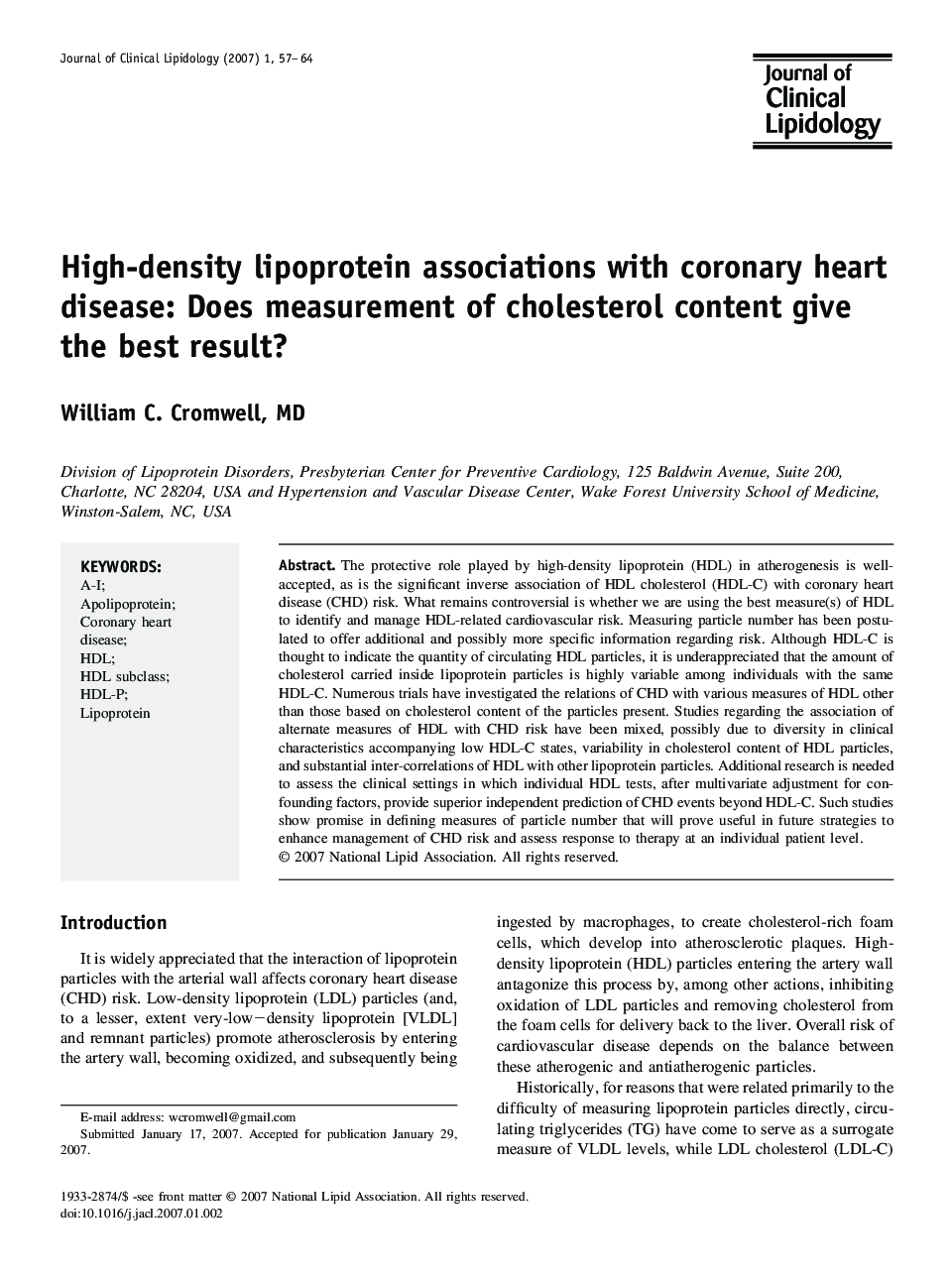| Article ID | Journal | Published Year | Pages | File Type |
|---|---|---|---|---|
| 2967132 | Journal of Clinical Lipidology | 2007 | 8 Pages |
The protective role played by high-density lipoprotein (HDL) in atherogenesis is well-accepted, as is the significant inverse association of HDL cholesterol (HDL-C) with coronary heart disease (CHD) risk. What remains controversial is whether we are using the best measure(s) of HDL to identify and manage HDL-related cardiovascular risk. Measuring particle number has been postulated to offer additional and possibly more specific information regarding risk. Although HDL-C is thought to indicate the quantity of circulating HDL particles, it is underappreciated that the amount of cholesterol carried inside lipoprotein particles is highly variable among individuals with the same HDL-C. Numerous trials have investigated the relations of CHD with various measures of HDL other than those based on cholesterol content of the particles present. Studies regarding the association of alternate measures of HDL with CHD risk have been mixed, possibly due to diversity in clinical characteristics accompanying low HDL-C states, variability in cholesterol content of HDL particles, and substantial inter-correlations of HDL with other lipoprotein particles. Additional research is needed to assess the clinical settings in which individual HDL tests, after multivariate adjustment for confounding factors, provide superior independent prediction of CHD events beyond HDL-C. Such studies show promise in defining measures of particle number that will prove useful in future strategies to enhance management of CHD risk and assess response to therapy at an individual patient level.
